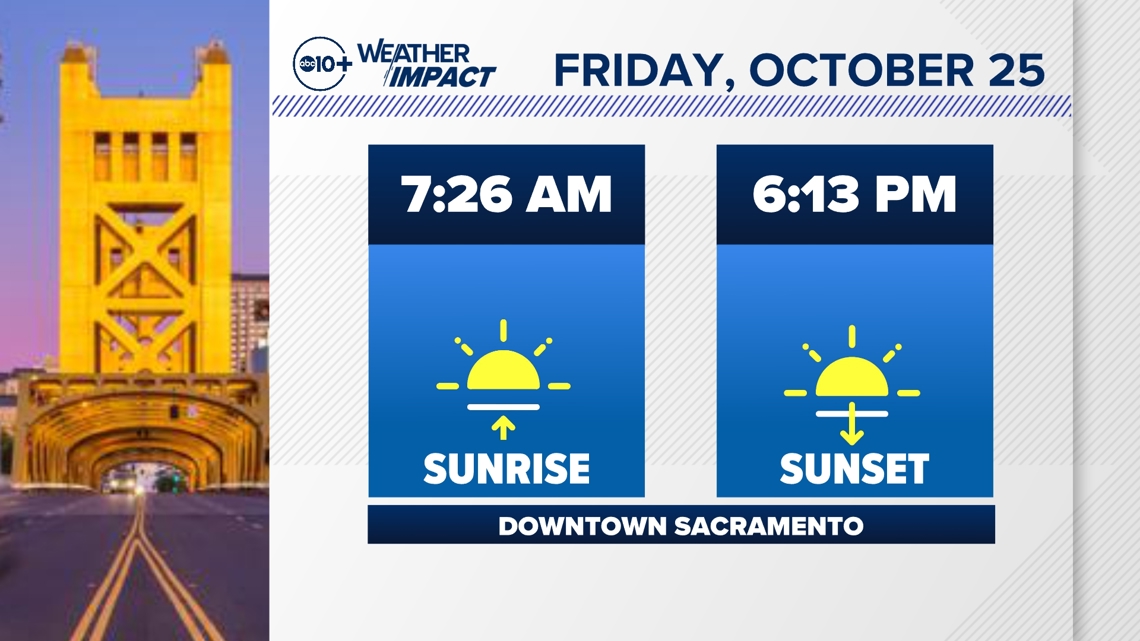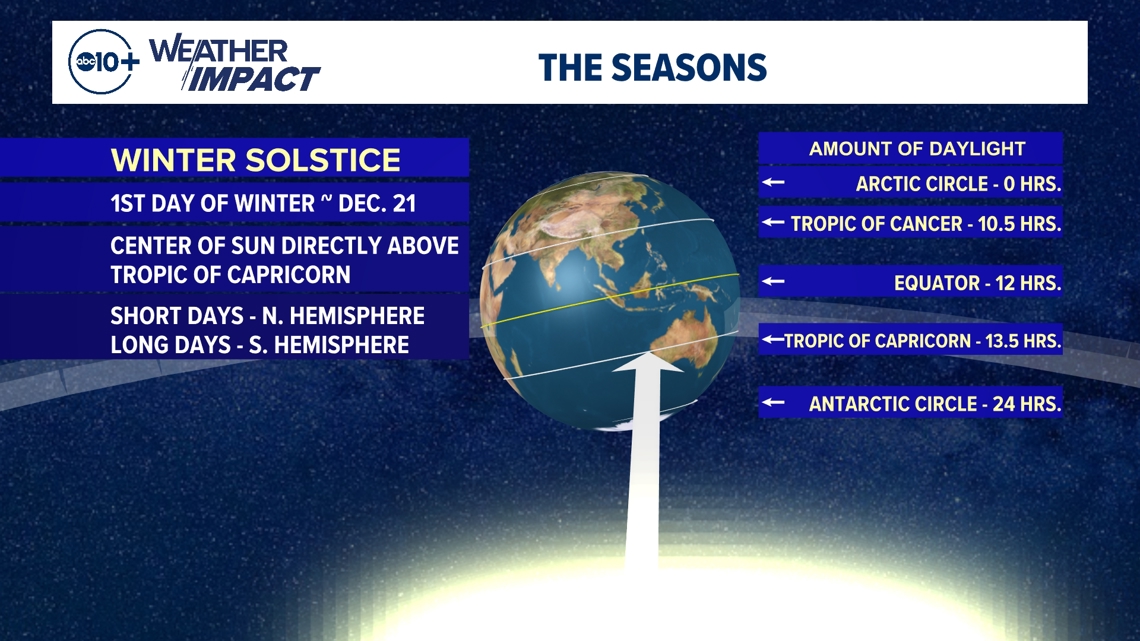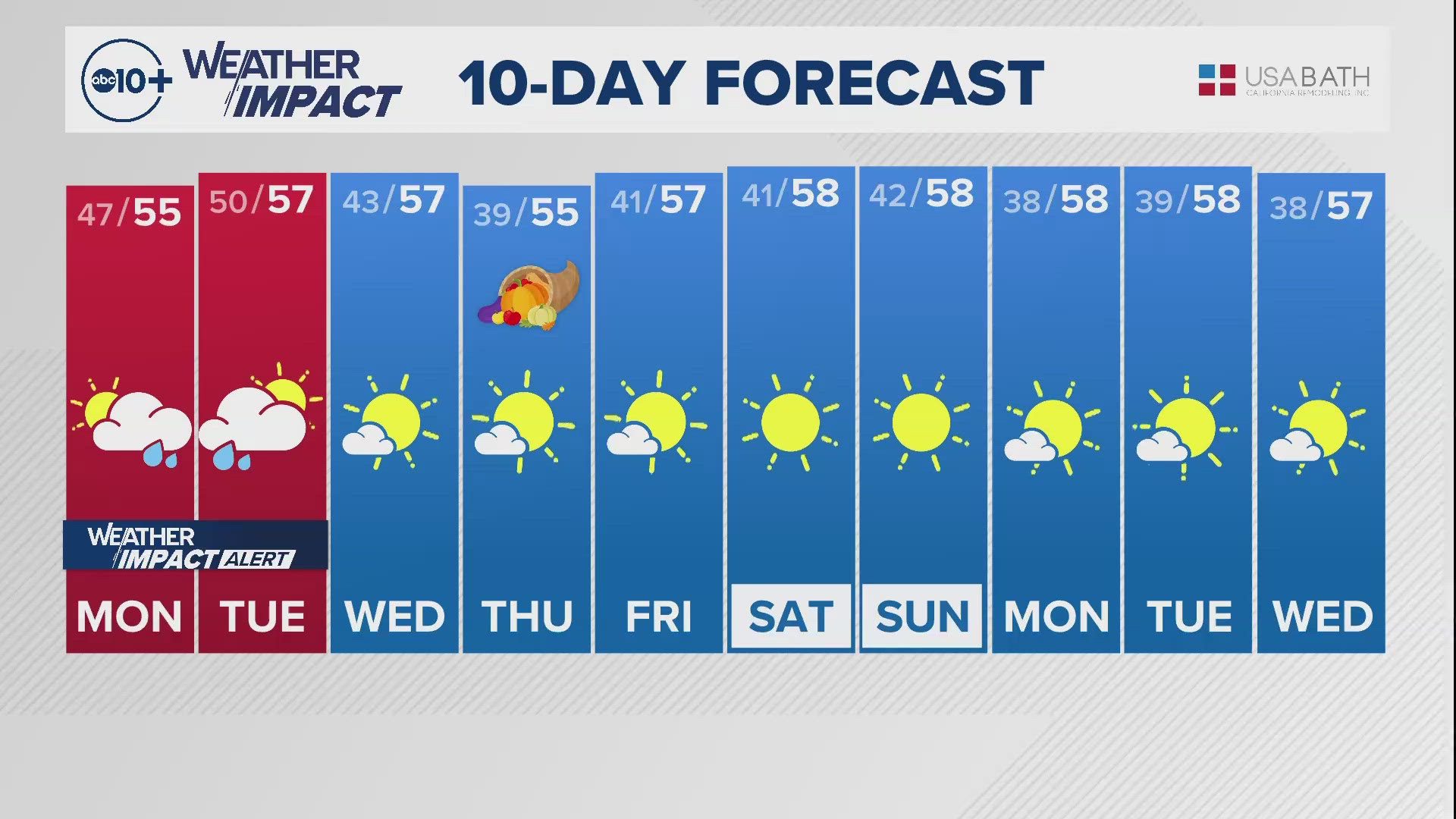SACRAMENTO, Calif. — Daylight hours are getting shorter as the Northern Hemisphere moves closer to the winter solstice.
Friday, Oct. 25, Downtown Sacramento will have nine hours and 47 minutes from sunup to sundown. Sunrise is 7:26 a.m. Sunset at 6:13 p.m.


Every day the Earth makes a full rotation in its position toward or against the Sun. This is why we experience daytime and nighttime. The amount of time we have facing the sun and daylight is due to the Earth's orbit around the Sun. This happens every 365 days (one year) and is why we have seasons.
At the summer solstice, the sun's rays are directly over the Tropic of Cancer giving the Northern Hemisphere its maximum opportunity for daylight hours. The Artic Circle will experience 24 hours of daylight. At the opposite pole, the Antarctic Circle will have no daylight. This happens roughly around June 20 every year.


The opposite is true at the Winter Solstice when the sun's rays are directly over the Tropic of Capricorn giving the Southern Hemisphere its maximum opportunity for daylight hours. The Artic Circle will experience no daylight, but the Antarctic Circle will have 24 hours of daylight. This happens roughly around Dec. 21 every year.


The other change we have in our sunrise and sunset happens in more dramatic fashion when we "Fall Back" and "Spring Forward" changing those clocks in one day.
Daylight Saving Time ends and Standard Time begins this year Sunday, Nov. 3. That's the day we "Fall Back" and get an extra hour of sleep. Sunrise will change to 6:35 a.m. Sunset will change to 5:03 p.m. Sun glare will be different for the morning and evening commute, which could slow travel times until drivers adjust.
The time change happens after Halloween. This will keep it light just a little longer for all the trick-or-treaters with sunset at 6:06 p.m.
WATCH ALSO:





















